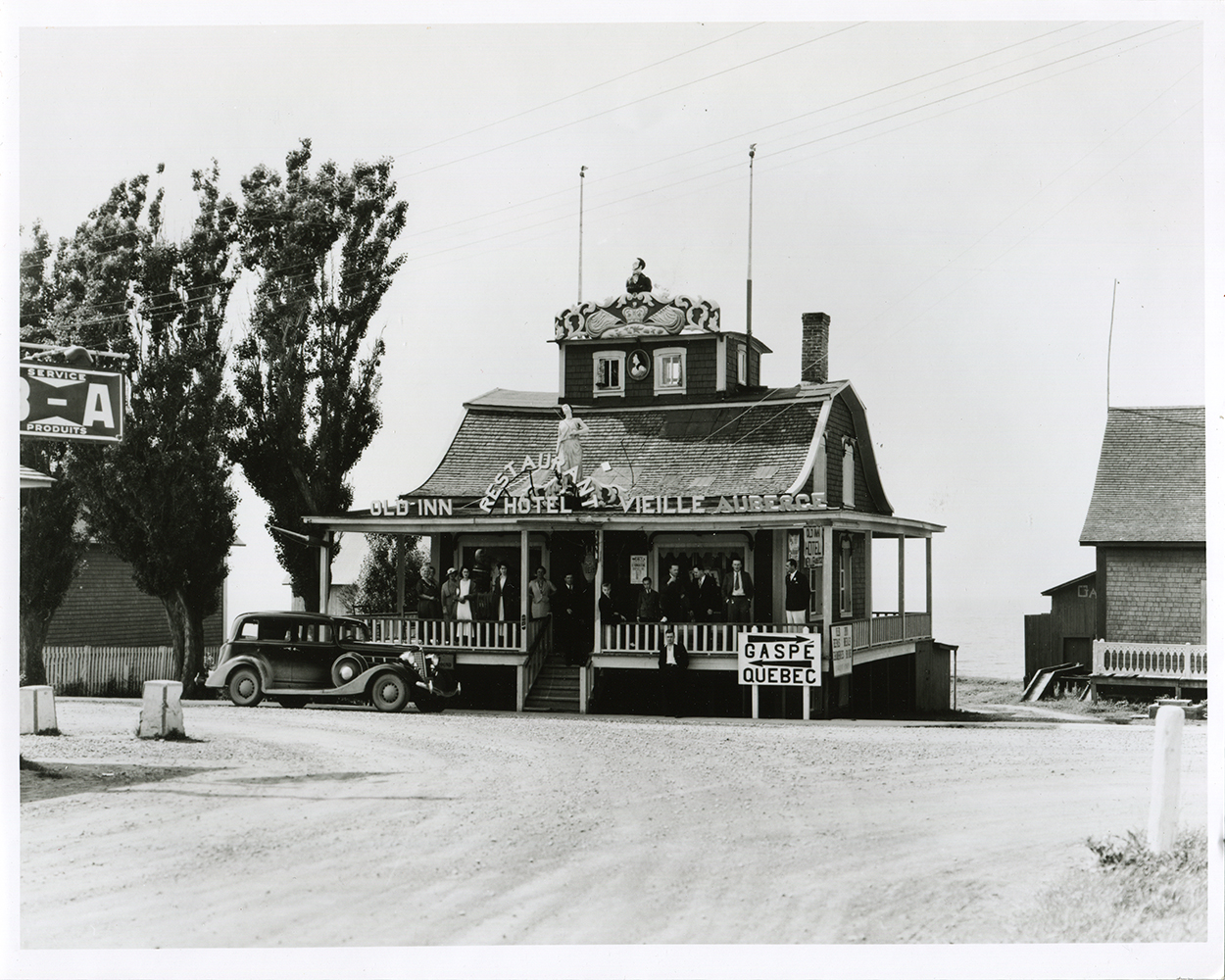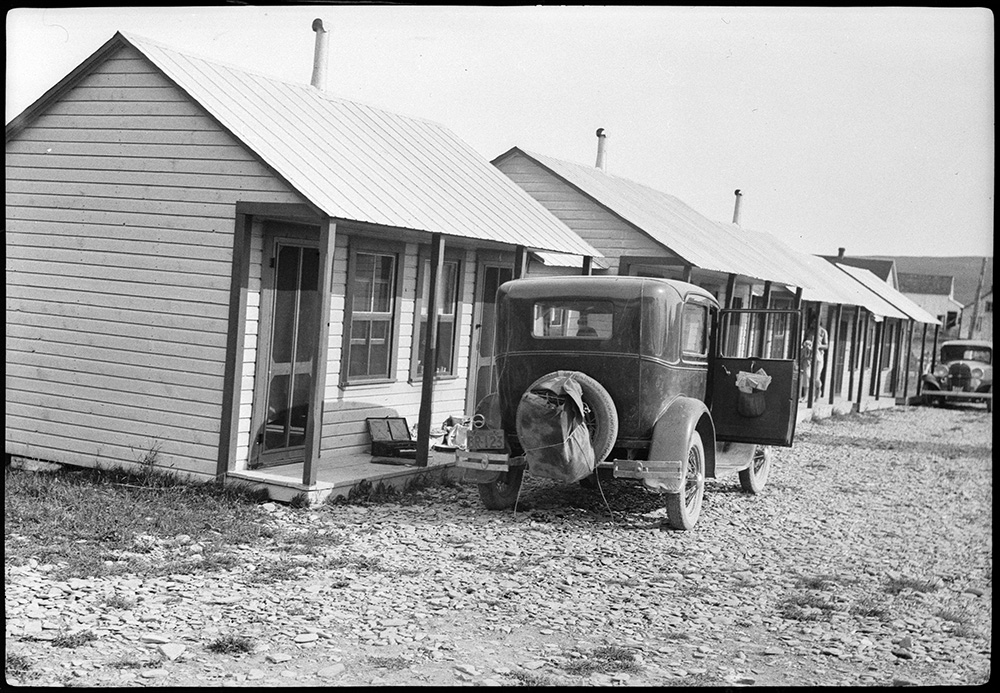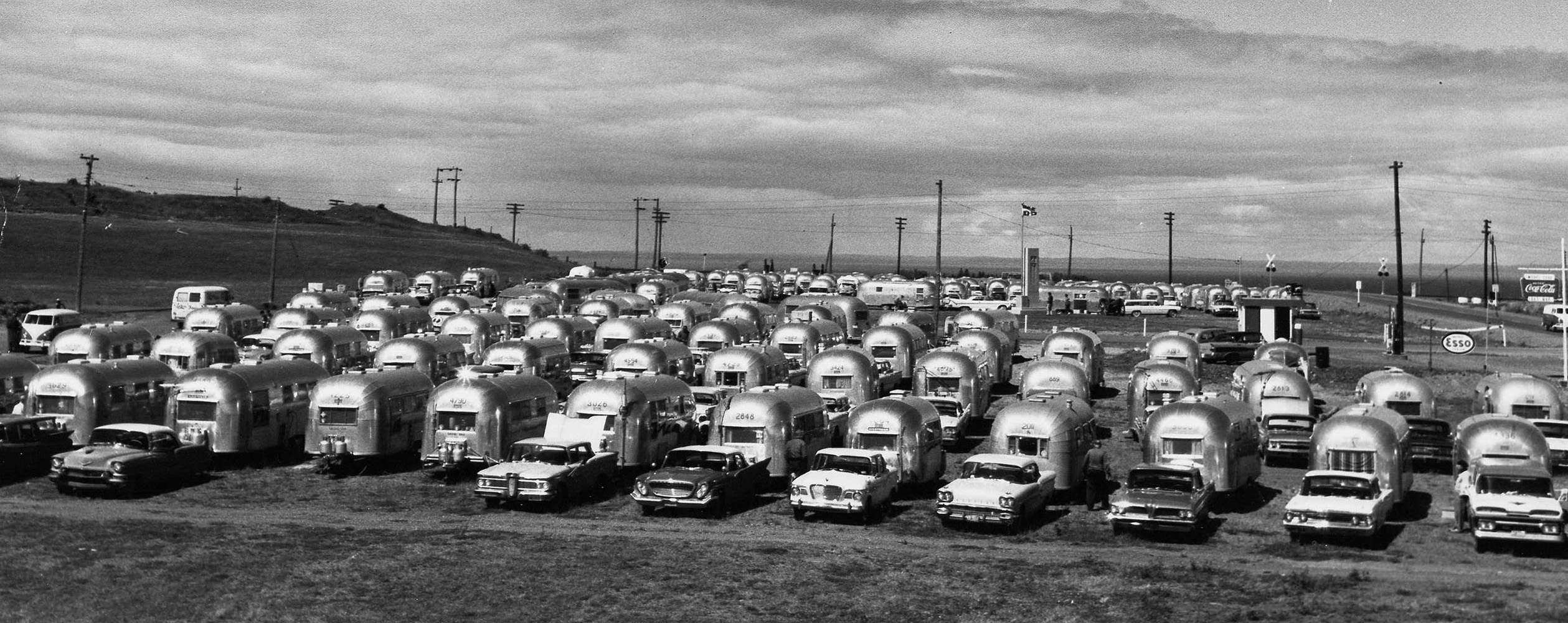The Development of the Hotel Industry
Hotels could be found in almost every village along the Gaspé Highway.

Adorned with figureheads from wrecked ships, the Vielle Auberge in Ste-Flavie offered information, food and accommodation – and a combination of charm and character.
They came in all sizes and price ranges, from 100-room hotels in Metis Beach, Matane and Gaspé to small roadside inns in Baie-des-Sables or Cap-Chat. Some were on the shoreline, others higher up hillsides to offer grand views of the surrounding landscape.

In the seaside setting of Percé, modest wooden cabines were built next to the ocean, their windows opening onto the waves and the beach.
Hotel operators in the Gaspésie have always shown ingenuity and a capacity to adapt to changing times and needs. With the evolution of the clientele, the size and configuration of hotels has changed enormously.
Many of the large rambling wooden hotels built in the early 1900s were not pulled down until the 1970s. The modest cabines fought for market share with motor-hotels (or motels as they were usually called) in the 1950s, where every room had a berth for a car.

Tourism brochures, like this one for Metis Beach, promoted the region’s key selling point – hay fever free.
Rooming houses disappeared with the arrival of regulations and inspectors. Some were re-invented as gîtes or Bed and Breakfasts. Big hotels have come and gone. Small hotels have closed only to be re-born as charming auberges. New forms of short-term accommodation that closely resemble those of two centuries ago – like couch-surfing and Airbnb rentals – are now in vogue.
What will come next? The only constant in tourism is change.


